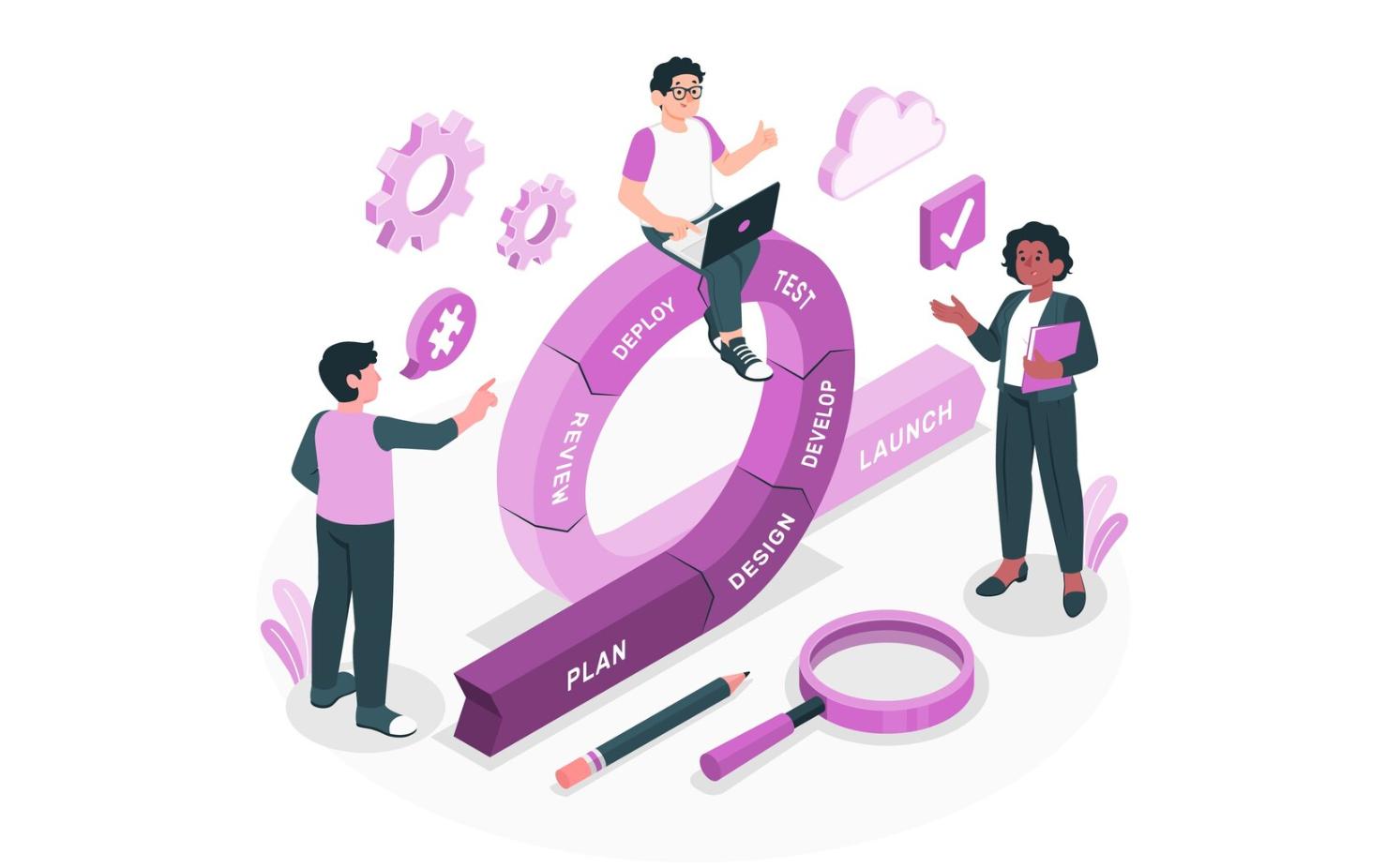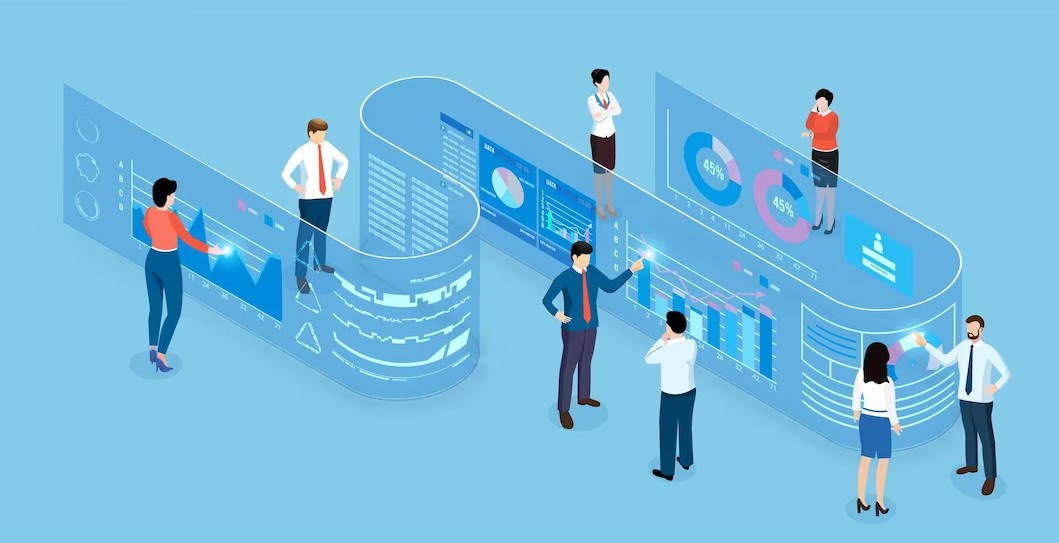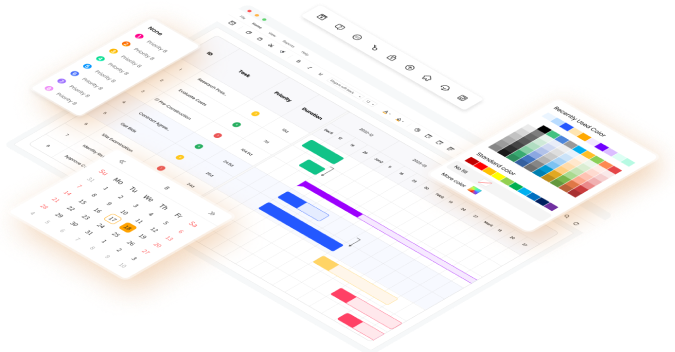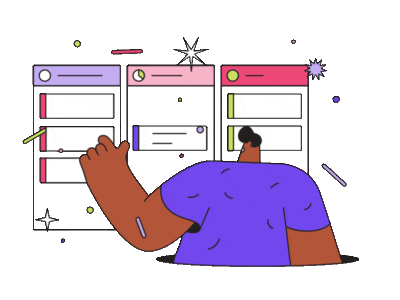
In a world buzzing with plans, learning the process of execution of projects is the key. But where to begin? This guide holds your hand through the maze of steps in project execution. Discover the secrets to successful project management, from laying the groundwork to nailing a strategy.
With insights gleaned from experts and real-world practices, this guide is your passport to turning project dreams into reality. Ready to embark on your journey to mastering a project execution strategy? Embrace practical insights from industry leaders and streamline your project execution journey for lasting triumphs. Buckle up and dive in!
In this article
What Is Project Execution
Project execution is where plans transform into reality. Any project's heartbeat, encompassing crucial steps and actions, turns ideas into tangible outcomes. It is the phase where the project plan is put into action. It involves coordinating resources, managing tasks, and ensuring everyone works toward the project's goals.

1. Key Components
Here's a breakdown of the key components of project execution:
- Task management. Breaking down the project into manageable tasks and assigning responsibilities to team members.
- Resource allocation. Efficiently assigning and utilizing resources like time, budget, and workforce.
- Monitoring progress. Constantly tracking and evaluating the project's advancement to identify and address issues early.
- Risk management. Mitigating potential risks that could derail the project's progress.
2. Importance
Below are the reasons why project execution is important:
- Bringing plans to life. Execution breathes life into project blueprints, turning visions into reality.
- It allows for flexibility and adjustments as unexpected challenges arise.
- Meeting objectives. Successful execution ensures that project goals are met within the defined constraints.
3. Challenges
The following are the challenges one might face during a project execution phase:
- Ensuring seamless communication and collaboration among team members.
- Resource constraints. Dealing with limitations in budget, time, or manpower.
- Unforeseen hurdles. Handling unexpected issues that can disrupt the project flow.
4. Success Factors
Outlined below are the factors to check if a project execution has gone successful:
- Clear communication. Ensuring everyone understands their roles and responsibilities.
- Effective leadership. Guiding and motivating the team throughout the execution phase.
- Being open to changes and adjusting strategies as needed.
Project execution is the engine that propels projects forward, making it pivotal for successful outcomes. Understanding its intricacies sets the stage for a smoother journey toward project completion.
Project Execution Strategies
Embarking on project execution without a strategy is like sailing without a compass. This section delves into pivotal strategies, starting with the essential choice of the right tool and exploring various approaches for seamless project execution.
1. Clear Goal Setting
Establishing clear and concise project goals is imperative. These goals act as guiding principles throughout the project execution phase, ensuring everyone understands the project's direction and purpose.
2. Effective Communication
Open and transparent communication among team members is key. Platforms like Slack or Microsoft Teams facilitate seamless communication, aiding collaboration and keeping everyone informed.
3. Task Prioritization
Identifying and prioritizing tasks ensures that the most crucial ones are addressed first. Tools like Trello or Asana help visualize and organize tasks, aiding in efficient execution.
4. Risk Management
Anticipating potential risks and developing contingency plans minimizes their impact on the project. Regular risk assessments enable proactive handling, preventing significant disruptions.
5. Regular Progress Tracking
Implementing mechanisms to track progress ensures that the project stays on course. Monitoring advancements helps identify deviations early, allowing for timely interventions.
6. Resource Allocation
Efficiently allocating resources, such as time, budget, and human resources, is essential. Tools like Monday.com assist in managing resources effectively and maximizing productivity.
7. Adaptability and Flexibility
Embracing adaptability and flexibility throughout the project allows for adjustments as needed. Agile methodologies like Scrum promote iterative and flexible approaches to project management.
8. Quality Control
Integrating quality checks at various stages ensures the final output meets predefined standards, maintaining the project's integrity.
9. Celebrating Milestones
Recognizing achievements and milestones boosts team morale and motivation, fostering a positive work environment and encouraging continued success.
Each strategy contributes to a holistic and well-rounded approach to project execution, emphasizing the importance of methodical planning, effective communication, risk management, and adaptability to ensure project success.
Closely Monitor the Project Execution Phase
In addition to all the above-mentioned strategies, perhaps the most important suggestion from us would be to closely track project execution, as monitoring project execution is like navigating a journey – without a map or checkpoints, getting lost becomes easy.

1. Reasons To Monitor Project Execution
Here's why keeping a close eye on this phase is crucial:
- Identifying issues early. Monitoring allows for spotting problems before they escalate. It's like catching a leaky faucet before it floods the house; addressing issues early prevents bigger disasters.
- Maintaining progress. Like checking a map during a road trip, monitoring ensures you're on the right track. It helps in staying aligned with project goals and timelines.
- Resource optimization. Without monitoring, resources might be misallocated or underutilized, affecting the project's efficiency and budget.
- Risk mitigation. Monitoring helps foresee potential risks, enabling proactive measures to minimize their impact.
2. Possible Issues You Could Encounter if You Don't
The following are the possible problems that may arise when the project execution isn't monitored:
- Scope creep. The project might gradually expand beyond its initial scope, increasing costs and delays.
- Missed deadlines. Without monitoring progress, timelines can slip, causing delays in delivering the final product.
- Resource mismanagement. Lack of oversight can lead to inefficient use of resources, resulting in budget overruns or shortages.
- Quality issues. Without monitoring, quality standards might be overlooked, leading to subpar outcomes.
In essence, monitoring during project execution is akin to regularly checking the GPS during a trip—it ensures you're heading in the right direction, staying on schedule, and effectively utilizing resources. Failure to monitor risks and lose control results in delays, budget overruns, and compromised project quality.
3. Choosing the Right Tool for Monitoring Project Progress
Selecting the perfect tool sets the tone for effective project execution. Consider the following factors:
- Ensure the tool aligns with your project's needs. Look for task management, collaboration, and reporting capabilities.
- Ease of use. Opt for user-friendly interfaces to facilitate team adoption.
- Choose a tool that grows with your project's demands.
- Check if it integrates with existing software or aligns with your project needs.
Wondershare EdrawProj: A Powerful Project Management Tool
EdrawProj stands tall as the go-to tool for seamless project execution. Its user-friendly interface and robust features make managing tasks, coordinating teams, and tracking progress a breeze. EdrawProj empowers project managers and teams, fostering efficiency, productivity, and success. Embrace a tool designed to elevate project management to new heights.

Key Features
EdrawProj emerges as a robust choice for traditional project management. Its strengths lie in:
- Simplified task management. Simplified task allocation and tracking for smoother execution.
- Comprehensive reporting. Comprehensive reports aiding in progress assessment.
- Free version availability. Accessible features even in the free version.
- User-friendly interface. Easy to navigate, reducing the learning curve for teams.
- Gantt chart functionality. It helps visualize project timelines and dependencies effectively.
Conclusion
In the complex landscape of project management, this guide serves as a guiding light for beginners, illuminating the path to successful execution of projects. By unraveling essential strategies and tools, it aims to equip you with the know-how to navigate challenges and steer your projects toward triumph.
Recapping vital points—from understanding project execution's essence to the significance of monitoring and employing effective strategies—the article lays a strong foundation for effective project management.
Embrace this knowledge, and let it be your compass. Dive into project execution, learn, adapt, and practice these strategies. With each step, you'll grow more confident in orchestrating projects, ensuring smoother execution, and achieving commendable results. Your journey to project execution strategy begins now!
A professional Gantt chart tool to plan, manage and track your projects, process and resources.



